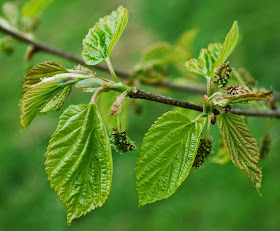I've been starting seeds for s few weeks. Currently using 6-packs in a plastic tray with clear cover. For germination, they are on a seed starting warming mat. Once they germinate, I move them under the
CFL grow-light system that I made in March 2014. I have the seedlings as close to the lights as I can place them. The two boxes of larger seedlings were just under the lights, the others are next to get the CFL light spa treatment. The larger seedlings will go into the sunroom to grow them a bit larger before placing outside. The sunroom is acting now as a greenhouse.
Seedlings already in the sunroom: tomatoes, morning glories, nasturtiums, marigolds.
Seedlings heading to the sun room: Four o'clocks, nasturtiums, many varieties of peppers.
Seedlings under the CFL system: milkweed, joe pye weed, morning glories, French marigolds, swiss chard. The swiss chard germinated in 2 days.
On the heating mat: more of the flowers.
Too early for beans, zucchinis, and squashes.
I didn't have it in me to start early vegetables outside this year. Other than snowpeas, which are germinating.
I had
stratified the Joe Pye Weed and Milkweed seeds in zipper plastic bags, on moist paper towels, for 6 weeks. Then placed on warming mat. As the seeds germinated, I moved them into 6-packs with seed starting medium. The milkweeds did very well with this method. The Joe Pye weed seems too delicate. However, there are 2 plants. Considering this is an experiment and they grow very large, 2 plants is enough.
The milkweed is
Asclepias syriaca, which I started for bee forage and nostalgia and novelty. Does not grow here like it did in the midwest. The balls of flowers are unusual.
 |
| "Asclepiascommon" by Original uploader was Hardyplants at en.wikipedia - Transferred from en.wikipedia; transferred to Commons using CommonsHelper.. Licensed under Public Domain via Wikimedia Commons - https://commons.wikimedia.org/wiki/File:Asclepiascommon.JPG#/media/File:Asclepiascommon.JPG |
















































